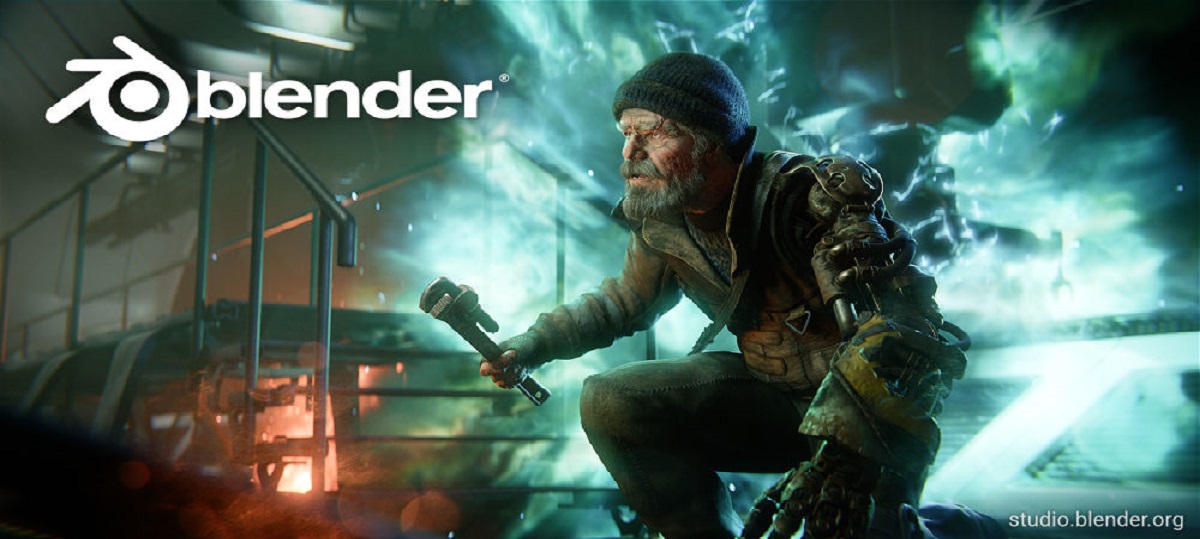
It became known the release of the new version of Blender 3.4, version in which a large number of changes and improvements have been added, of which we can find that the support for Wayland protocol, allowing Blender to be run directly in Wayland-based environments without using the XWayland layer, which will improve the quality of work on Linux distributions that use Wayland by default. To work in Wayland-based environments, the libdecor library is required to decorate windows on the client side.
Another novelty that Blender 3.4 presents added the ability to compile Blender as a module for the Python language, which allows to create links and services for data visualization, animation, image processing, video editing, 3D format conversion and automation of various jobs in Blender. To access Blender functionality from Python code, the "bpy" package is provided.
We can also find that Added “Path Guiding” method to Cycles rendering system which, in comparison with the technique of tracing paths, allows, consuming the same processor resources, to achieve higher quality when processing scenes with reflected lighting.
In particular, the method Allows you to reduce the noise level in scenes where it is problematic to follow the path to the light source using the path-following technique, for example, when the room is illuminated through a small gap in the doorway. The method is implemented by integrating the OpenPG (Open Path Guiding) library prepared by Intel.
The mode of sculpture has simplified access to the automatic masking settings, which is now available in the 3D viewport header. Added options for automatic masking by hits, point of view, and selected area. To convert an automatic skin to a regular skin attribute that can be edited and rendered, it is proposed to use the "Create Skin" button.
The editor UV Introduces a New Geometric Smoothing Brush (Relax), which allows improve the quality of UV development by achieving a more accurate match of 3D geometry when calculating texture mapping parameters on a 3D object. The UV editor also adds support for non-uniform meshes, pixel spacing, grid top fixing, UV rotation aligned to a selected edge, and quick randomization of scale, rotation, or offset settings for selected UV islands.
The capabilities of Grease Pencil's 2D drawing and animation system have been expanded, allowing you to create 2D sketches and then use them in a 3D environment as three-dimensional objects (a 3D model is formed based on several flat sketches from different angles).
Of the other changes that stand out:
- Provided a viewport overlay to display geometry nodes, which can be used to preview, debug, or test attribute changes in the node tree.
- Added 8 new nodes to extract data from meshes and curves (for example, determine face joints, vertex corners, set normal curve, and check control points).
- A node for sampling UV surfaces has been added, which allows you to find out the value of an attribute based on the coordinates of the UV map.
- In the “Add” menu, the resources of a group of nodes are displayed.
- Added an outline modifier to generate a perimeter trace based on the camera view. Added the ability to import multiple SVG files at once.
- Significantly improved fill tool. A new filling method is proposed that uses the radius of a circle to determine the proximity of the ends of the lines at the moment of filling.
- Physically Based Rendering (PBR) extensions are implemented in ".mtl" files.
Improved work with fonts. - Added the ability to extract frames from video in WebM format and implemented support for encoding video in AV1 format using FFmpeg.
- Improved performance of subdivision surface modifier, creation of objects in batch mode, calculation of modifiers disabled, creation of thumbnails in WebP format.
- Improved sculpting performance in situations where masks and face sets are not used.
Finally, if you are interested in knowing more about this new release, you can consult the details In the following link.
How to install Blender 3.4 in Ubuntu and derivatives?
For those who are interested in being able to install this new version of Blender, they will be able to do it from its Snap package.
For the installation, it is enough to have the Snap support in the system and in a terminal type the command:
sudo snap install blender --classic